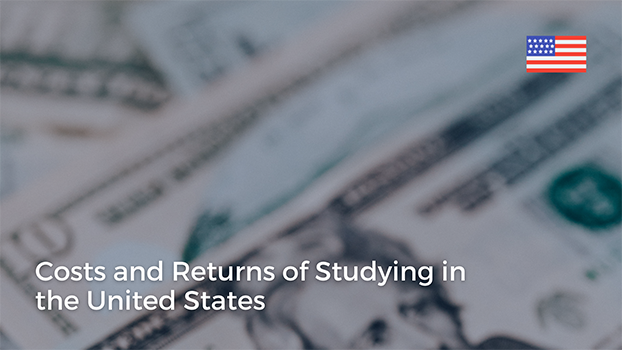Study in US Cost and Returns at Master’s for International Student

International Education can be expensive. People choose to study abroad not just for better education but also for better career prospects and new experiences. Is it worth spending so much money?Understanding the study in US cost is essential. Doing a cost and returns assessment of your potential degree is very important. So, let’s get started with the costs involved!
Costs
There are 2 types of expenses associated with international education:
- University-related expenses
- Personal Expenses
University-related expenses include tuition fees, enrollment fees, accommodation fee if you live on campus and health insurance fees. In most cases, international students have to pay health insurance along with their tuition fees to their university, so we’ve added it in the university-related expenses. University-related expenses are basically any expenses payable to the university during the course of your degree.
Now, let’s go on to personal expenses. Personal expenses include your rent if you live outside of your university campus, food, travel, recreation and any other living expenses.
Both university and personal expenses depend on the location of your university and the duration of your degree. The location of your university determines how much your rent, living expenses and taxes would study in US cost. For example, the average rent in New York City for one room in an apartment is at least 1500 dollars per month, but the same in Buffalo is for about 400-500 dollars per month. So, there’s a vast discrepancy in the cost of living depending upon where you live. The duration of your degree determines how many classes you have to take. So your tuition fees and other university expenses will be determined by the duration as well.
On average, it takes 35 to 50 lakhs per year to do a Master’s in the US. As mentioned before, this would differ from university to university. So, let’s look at an example for a clearer understanding.
Let’s say you’re going to the US to study Mechanical Engineering. If you do a Master’s in Mechanical Engineering from Georgia Tech, then your total cost per year roughly comes to 50,000 dollars which is roughly 35 lakhs in Rupees. While if you do a Mechanical Engineering master’s degree at MIT, your yearly cost roughly comes to 70,000 dollars which is roughly 50 lakh Rupees. Keep in mind that Master’s degrees in the US are typically 2 years so the cost of your entire degree could be between 70 lakh to 1 crore rupees.
Returns
Returns can be counted both in terms of money earned back as well as experiences gained. Studying in the United States opens up a lot of opportunities for on-campus jobs, research experiences, internships as well as post-completion work. I will be mentioning the monetary returns you can gain while working in the United States. As a student, you are allowed to work part-time for 20 hours per week. The job could be on-campus or off-campus. On-campus jobs pay minimum wage so this would be anywhere between $8-15 per hour, depending upon what the minimum wage is in the state you are residing. Let’s say the minimum wage is $10 where you are. You’d be making about $200 per week with 20 hours of work. So, monthly you’d be roughly making 800 dollars. If you’re doing a job off-campus through CPT, your salary per hour would really depend on your field.
Let’s talk about post-completion work. Starting salaries after master’s range anywhere between 40,000 to 70,000 dollars and this would really depend on what your field of work is. Continuing with the example of mechanical engineering, on average a fresher mechanical engineer with a master’s degree in the US earns between 60,000 to 65,000 dollars per year. Note that your salary would be more if you already have some prior work experience. The returns surpass the costs with some years of work experience as well as career growth.
The study in US cost are high but the returns are also sizable. In conclusion, studying in the United States gives a wide variety of returns both in terms of experiences as well as salaries! We ask that you do a specific cost and returns analysis of your field before applying. To get more information about how to apply to universities abroad for your master’s degree, please Sign Up or visit our website – www.unirely.com.


